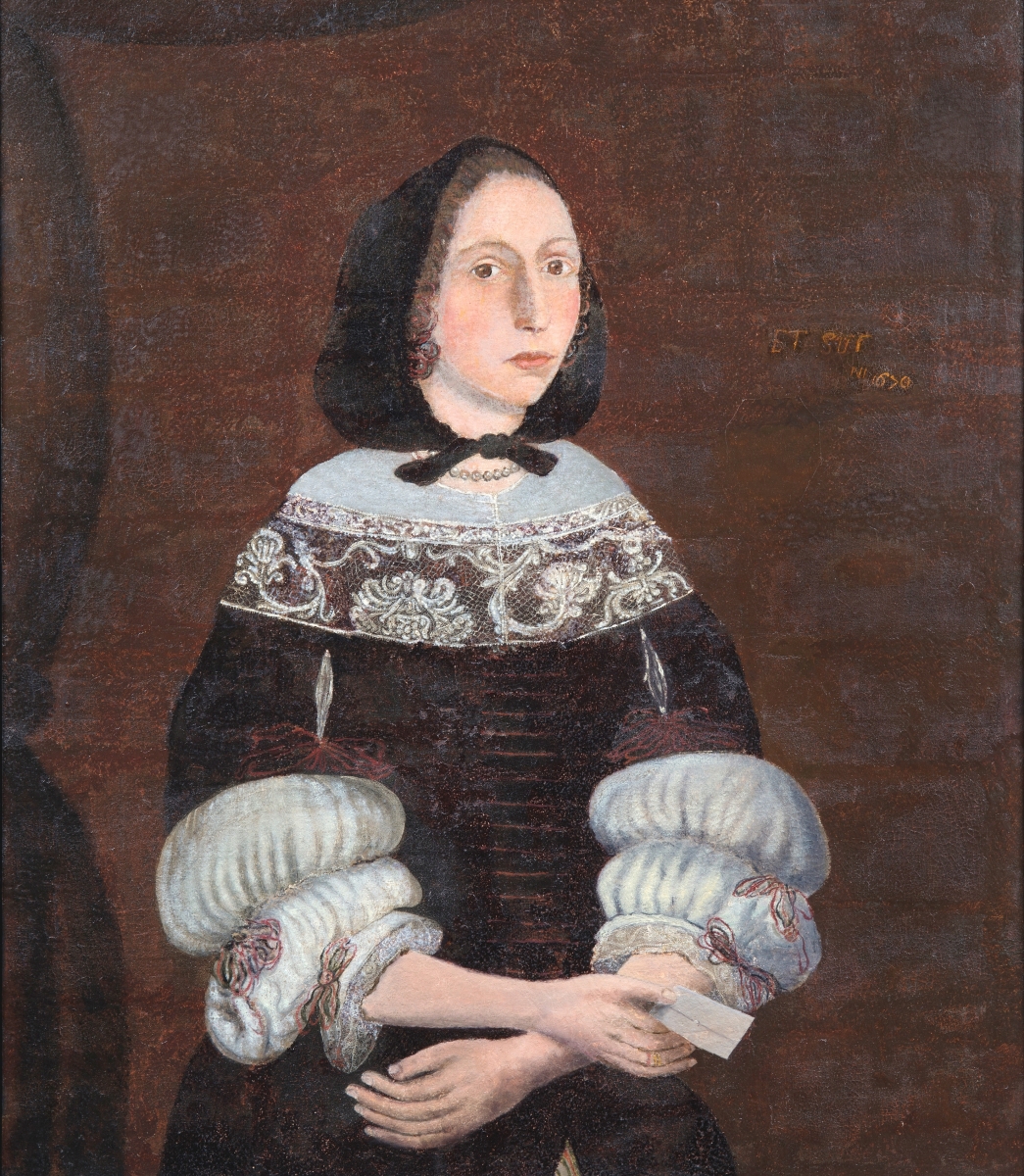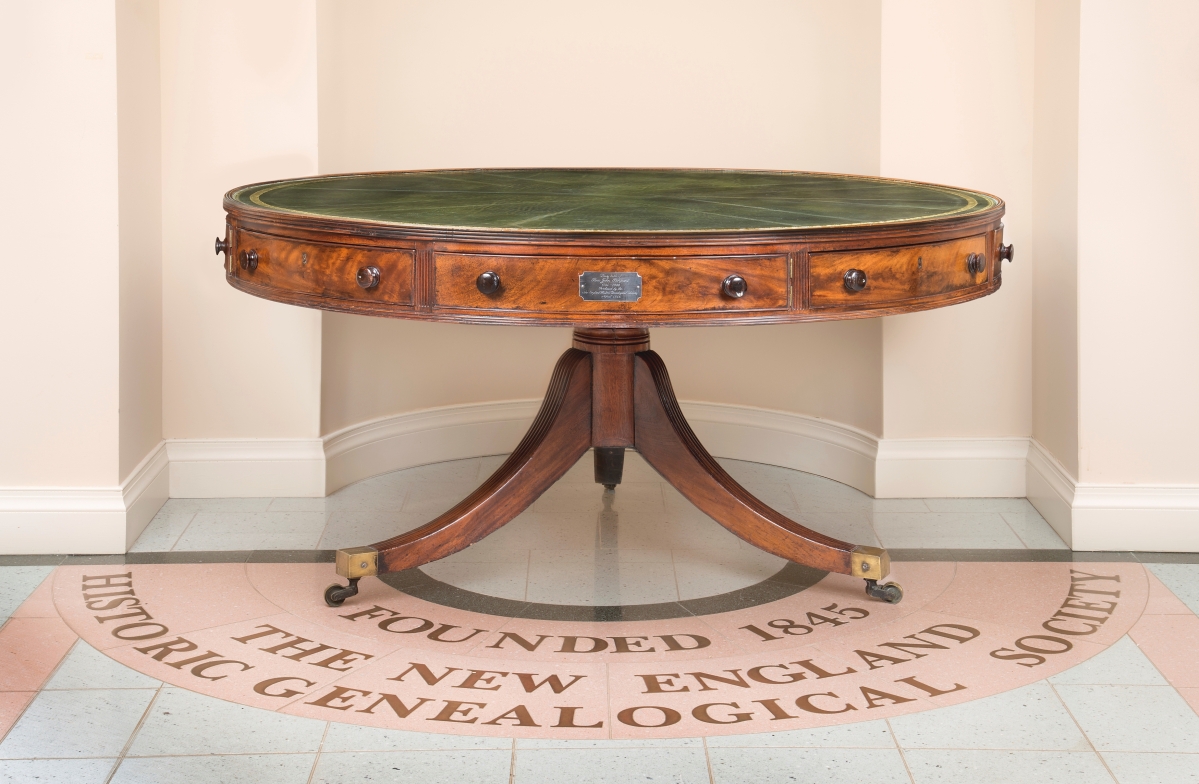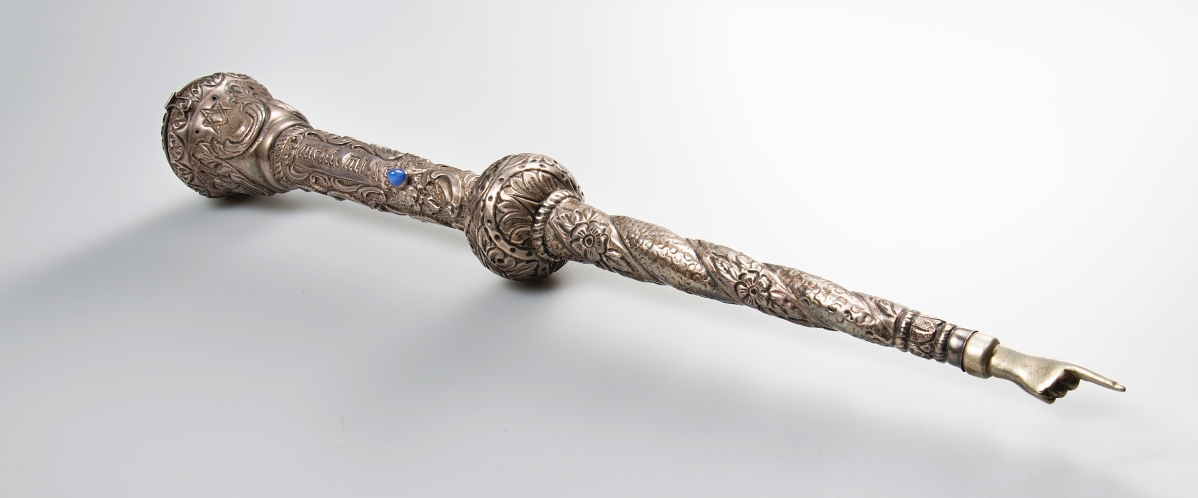BOSTON – American Ancestors/New England Historic Genealogical Society (NEHGS), one of the nation’s founding genealogical institutions and a leading nonprofit organization in the United States concerned with the study of family history, has, for the first time, highlighted its holdings in fine art, furniture and other artifacts in a new book. Published in 2020 to coincide with the 175th anniversary of American Ancestors, Family Treasures: 175 Years of Collecting Art and Furniture at the New England Historic Genealogical Society examines some of the organization’s most intriguing objects that help to tell the story of America. Family Treasures is authored by Gerald W.R. Ward, the Katharine Lane Weems senior curator of American Decorative Arts and Sculpture emeritus, Museum of Fine Arts, Boston; with a foreword by D. Brenton Simons, president and chief executive officer; and a preface by Curt DiCamillo, curator of special collections, both of American Ancestors/NEHGS.
The first acquisition into the collection, in 1846, was the mahogany Pierpont study table – a piece previously owned by JP Morgan’s grandfather and namesake, the Reverend John Pierpont.
This choice by NEHGS founders added a touch of distinction to the fledgling organization’s otherwise modest quarters in Boston’s Court Square.

Artist unknown, “Rebecca Rawson,” Boston, 1670, oil on canvas, gift of Reuben Rawson Dodge, 1884, accession No. R0017
Over time, many objects – most frequently portraits, furniture and associated family materials – found their way into the collection, usually by gift or bequest. Some collections were immense, or contained large or elaborate pieces of furniture, such as the Atkinson-Lancaster Collection, donated to NEHGS in 1933, which even formed a small museum at Ashburton Place on Beacon Hill, a former home of NEHGS.
For many decades, NEHGS was passive with regard to its fine art collections, especially after its move to Newbury Street in the Back Bay in the 1960s – a transition that required major downsizing for the institution.
Finally, in the 2000s, NEHGS reembraced its identity as a cultural organization and a comprehensive family history center. This approach, coupled with the gift of a donor to enable the ongoing acquisition of special, mission-related objects and art, provided the organization substantial progress in an area that had been stifled for decades.
In 2016, NEHGS hired its first curator of special collections, Curt DiCamillo, to help organize and catalog these collections. Today, the visitor experience at NEHGS and through its virtual presence at AmericanAncestors.org, has been greatly enriched by his proactive approach to the collections.
_photobyclairevail.jpg)
Artist unknown, “Native American Sachem (Possibly Ninigret II),” New England, circa 1890-1910, oil on canvas, New England Historic Genealogical Society purchase, 2014, accession No. 2014-177. Claire Vail photo.
Some of the works featured in the collections and featured in the book include two rare late Seventeenth Century portraits of Rebecca Rawson and her father, Edward Rawson, by an unknown artist. The story of Rebecca Rawson is a fascinating one as she was swept up in the greatest scandal to engulf Boston society in the late Seventeenth Century.
Another portrait by an anonymous artist depicts a Native American Sachem (Possibly Ninigret II), which is dated to circa 1890-1910 in New England. In 2014, NEHGS acquired the painting, which is one of several known later versions of a earlier portrait by an artist trained in the English or European tradition. Noting the commitment NEHGS has made to Native American history, the portrait now hangs in the Treat Rotunda at the Newbury Street headquarters.
“Desdemona’s Struggle,” circa 1875, by an unknown artist are sketches thought to tell the story of Desdemona Carter’s attempt to seek a Civil War pension owed to her as the widow of Joe Carter, who may have served in a Northern regiment in the Civil War. The federal government provided such pensions to former slaves who served on the Union side.
Believed to be the earliest New England posthumous portrait and possibly the first in the American colonies is that of Elizabeth Royall, which is attributed to Joseph Badger, Boston, circa 1747. The stark image depicts Elizabeth Royall (1740-47), lying on her death bed – dressed in a white bonnet and nightgown and enclosed within blue bed hangings.

The Reverent John Pierpont’s study table, England, circa 1825-35, mahogany, New England Historic Genealogical Society purchase, 1846, Accession No. R0275.
Benjamin Franklin (1706-1790) is one of several notable members listed on the Folger Family Tree, which William Coleman Folger did in 1866. Franklin’s mother, Abiah (1667-1752), was the daughter of Peter Folger and the second wife of Josiah Franklin (1657-1745). D. Brenton Simons located this object at the Boston Antiquarian Book Fair and a generous donor made it a gift to NEHGS in 2009.
The Lemmon-Phillips Filigree, done in Boston in 1735 by Mary Lemmon (1717-1798) is a quillwork coat of arms executed by Lemmon when she was an 18-year-old Charlestown schoolgirl. She chose to show the arms of her parents’ families – she was the daughter of Joseph Lemmon and Elizabeth Phillips.
Samuel G. Drake (1798-1875), one of the founding members of NEHGS, is said to have purchased Reverend John Pierpont’s study table at auction just about a year after the organization was incorporated. It was made in England, circa 1825-35.
Part of the Wyner Family Jewish Heritage Center at NEHGS is a Twentieth Century Central Torah pointer or “yad.” Translated literally as “hand,” the yad is used to point to the relevant text in the Torah as it is being read aloud. Like most examples, this silver yad ends in a pointing index finger.

Torah pointer, probably Central Europe, Twentieth Century, silver, silver gilt and probably glass 16- inches long, Wyner Family Jewish Heritage Center, accession No. 2018.83.
American Ancestors, also known as New England Historic Genealogical Society (NEHGS), has its national headquarters, research library and archive in Boston’s Back Bay. It serves more than 300,000 members and millions of online users engaged in family history nationally and around the world. American Ancestors’ award-winning genealogical research website has more than 1.4 billion names and maintains a publishing division which produces original genealogical research, scholarship and educational materials, including The NEHG Register, American Ancestors, and Mayflower Descendant, a quarterly journal of Pilgrim genealogy and history.
The New England Historic Genealogy Society is at 99-101 Newbury Street. For more information, 617-536-5740 or www.americanancestors.org.
Gavin Ashworth photos unless otherwise specified




_photobyclairevail.jpg)







